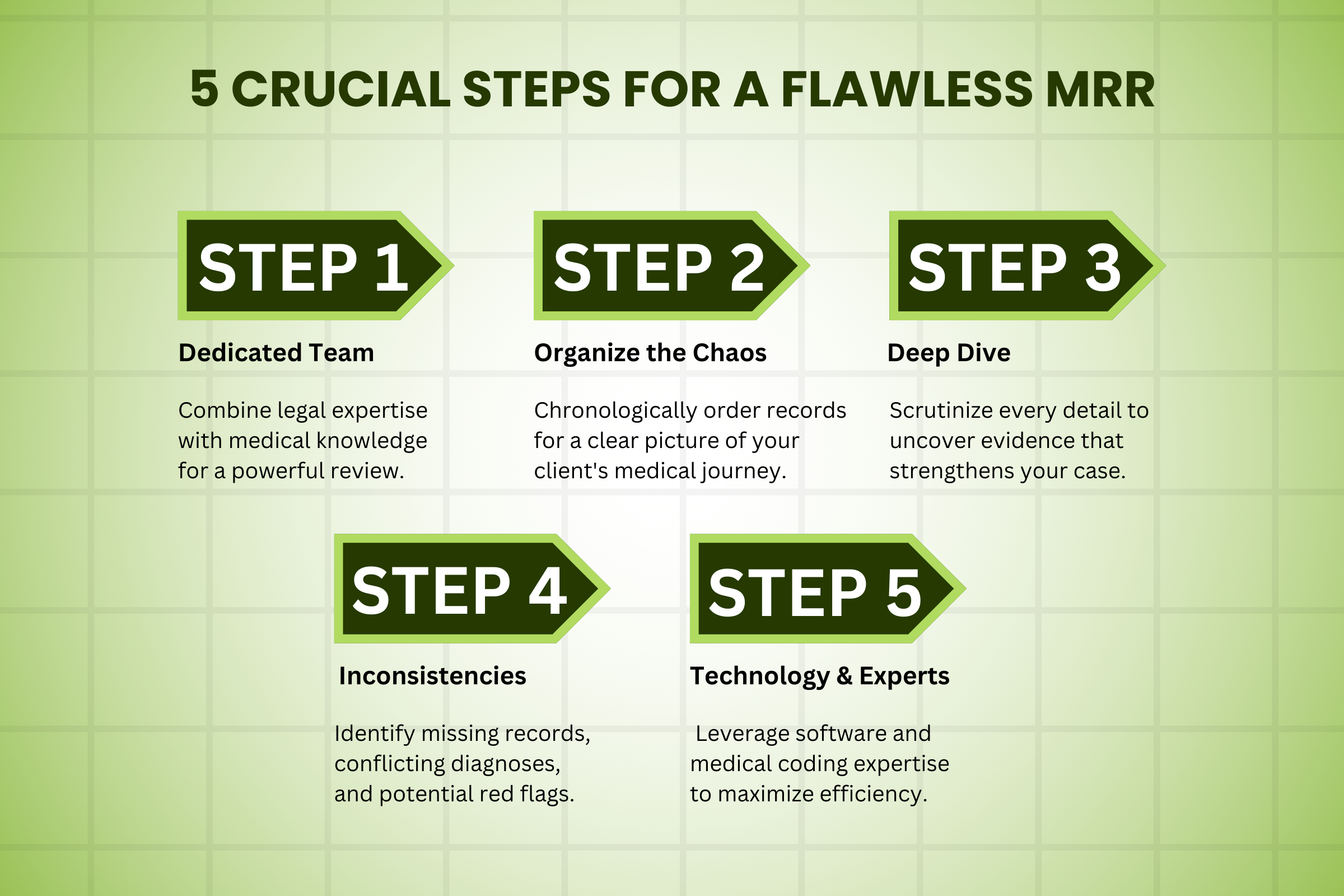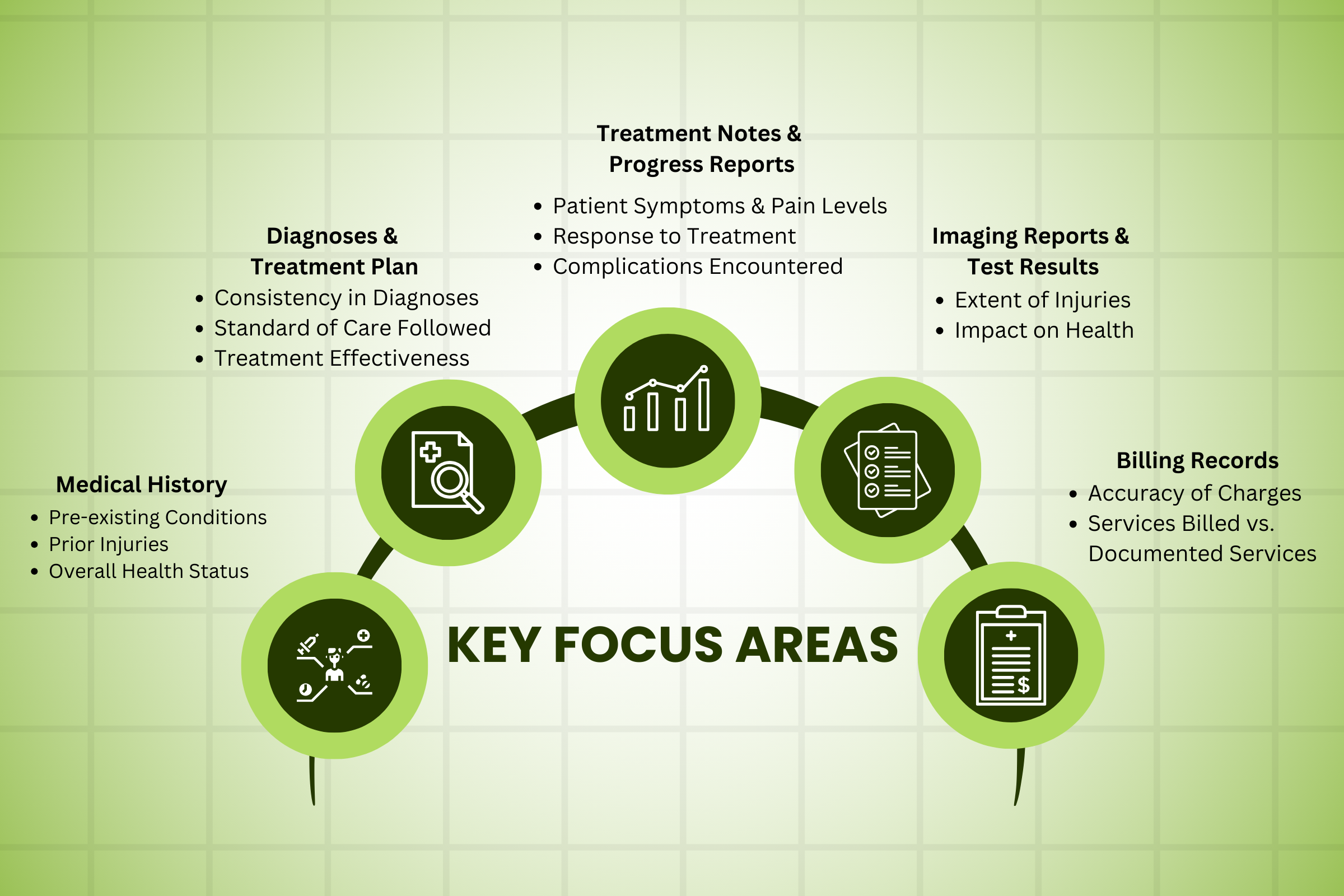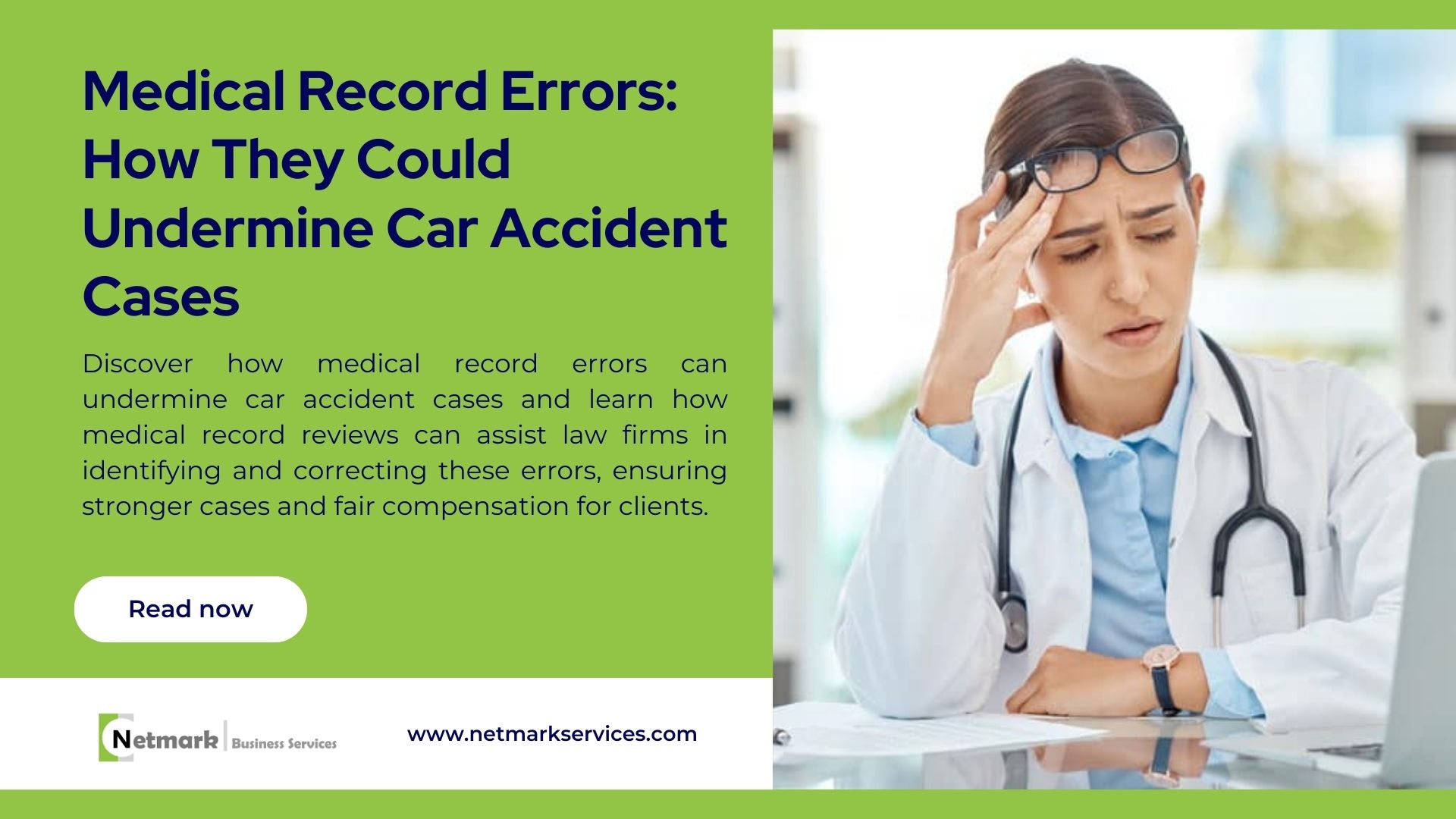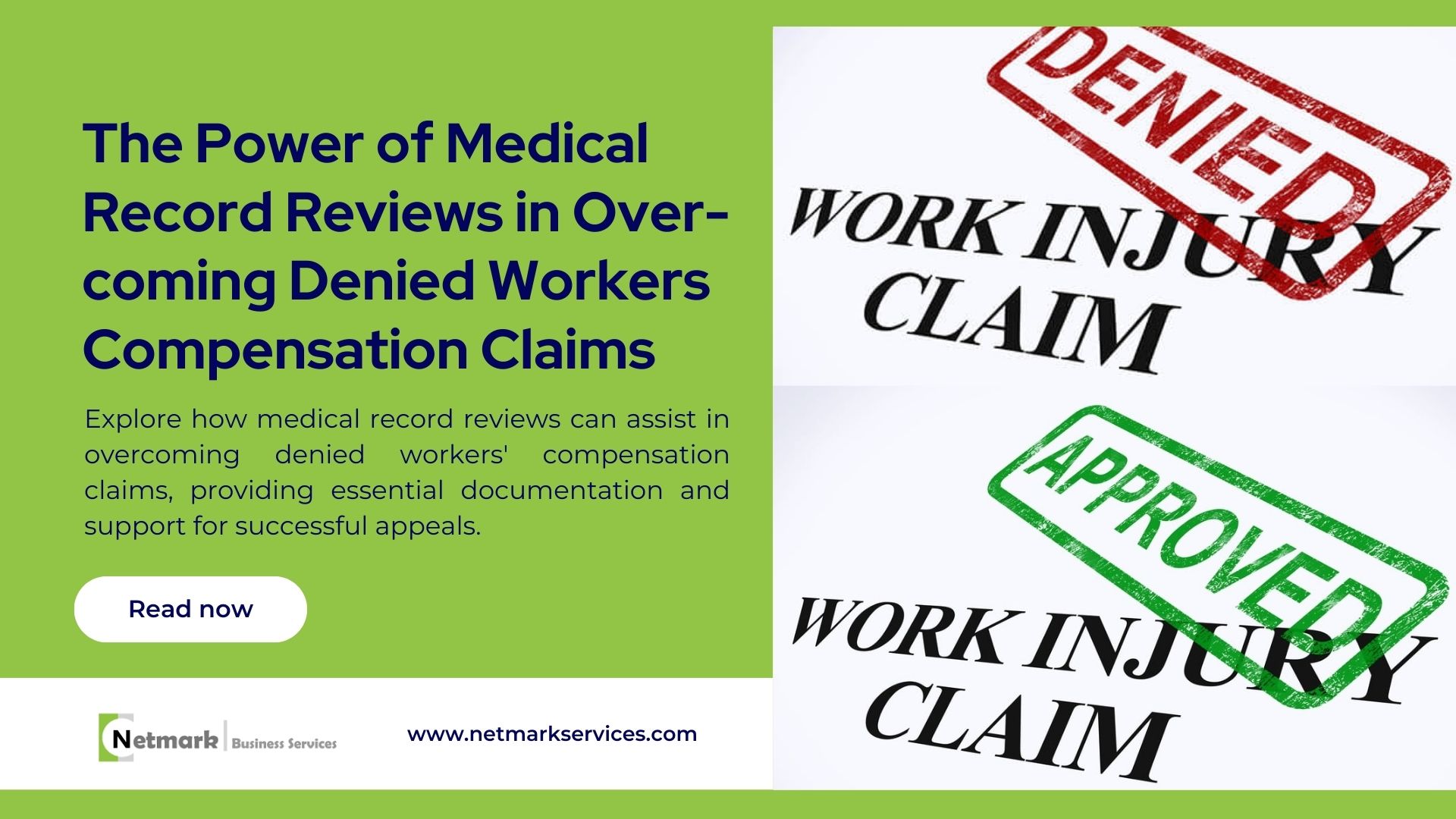5 Crucial Steps for a Flawless Medical Record Review in Personal Injury Cases

In the intricate world of personal injury law, success often hinges on meticulous preparation and uncovering every detail that strengthens your client’s case. Medical records act as a vital roadmap, documenting a patient’s medical history, treatment course, and crucial details about their injuries. A thorough medical record review by a qualified professional is an essential first step for any personal injury attorney.
But how do you ensure your review process is flawless and extracts every shred of valuable information? This article delves into the 5 crucial steps for a flawless medical record review in personal injury cases. By following these steps, you can build a strong foundation for your case and significantly increase your client’s chances of receiving the compensation they deserve.
Step 1: Assemble a Dedicated Team
The cornerstone of a successful medical record review is having the right team in place. This team typically comprises two key members:
Legal Professional: An attorney or paralegal familiar with the specifics of your personal injury case. They can identify relevant information and pinpoint areas requiring further investigation.
Medical Expert: A qualified medical professional, such as a registered nurse or physician, with expertise in the area related to your client’s injury. Their medical knowledge allows them to decipher complex medical terminology, assess the standard of care, and identify potential inconsistencies or red flags in the records.
Effective Teamwork:
Clear Communication: Establish clear communication channels between the legal and medical team members. Ensure both parties understand the case details, objectives of the review, and any specific areas of focus.
Role-Specific Tasks: Delegate tasks based on expertise. Legal professionals can handle gathering and organizing records, while medical experts analyze the content for medical insights.
Collaborative Review: Schedule joint review sessions to discuss key findings, potential concerns, and identify areas that might require further investigation.

Step 2: Organize and Chronologize Medical Records
Medical records can be voluminous and often arrive from various healthcare providers. Before delving into the details, dedicating time to organizing and chronologically ordering the documents is crucial.
Here’s how to streamline this process:
Create a Master List: Make a comprehensive list of all medical providers involved in your client’s care. This ensures no records are overlooked.
Utilize Technology: Consider using document management software to organize and categorize medical records electronically. This allows for easy retrieval and searching of specific information later.
Chronological Order: Arrange the records chronologically, starting from the initial consultation and progressing through all subsequent visits, treatments, and procedures. This allows for a clear picture of your client’s medical journey.
By establishing a well-organized system, you can efficiently navigate the records and avoid wasting valuable time searching for specific information.
Step 3: Conduct a Meticulous Review
With the records organized, it’s time for the in-depth review. This stage requires careful examination by both the legal and medical team members.
Key Focus Areas:

Medical History: Analyze the patient’s pre-existing medical conditions, prior injuries, and overall health status. This helps assess the baseline and determine if any pre-existing conditions could have contributed to or exacerbated the current injuries.
Diagnosis and Treatment Plan: Review the diagnoses made by each healthcare provider and the treatment plan implemented. Identify inconsistencies in diagnoses or treatments that may deviate from the standard of care.
Treatment Notes and Progress Reports: Scrutinize physician notes, nurses’ observations, and progress reports. Look for details regarding the patient’s symptoms, pain levels, response to treatment, and any complications encountered.
Imaging Reports and Test Results: Carefully examine X-rays, MRI scans, lab results, and other diagnostic reports. These can provide concrete evidence of the extent of the injuries and their impact on your client’s health.
Billing Records: Review medical bills to ensure accuracy and identify any inconsistencies between the services billed and the services documented in the medical records.
Extracting Relevant Information:
Highlight Key Points: Use highlighting tools or make notes to mark crucial information for easy reference later.
Summarize Findings: Create concise summaries of each record, outlining key diagnoses, treatment details, and relevant observations.
During this analysis, the legal team should be actively looking for evidence that supports their case, such as:
Deviations from the standard of care: Did the healthcare provider make any mistakes or omissions in their treatment that worsened your client’s condition?
Causation: Do the records clearly establish a link between the defendant’s actions and your client’s injuries?
Step 4: Identify Gaps and Inconsistencies
A thorough medical record review goes beyond simply reading the documents. It’s about identifying any discrepancies, missing information, or inconsistencies that could potentially weaken your case or point to potential negligence.
Red Flags to Watch For:
Missing Records: Are there any gaps in the medical history, or are there crucial reports absent from the provided documentation?
Conflicting Diagnosis: Do the diagnoses from different healthcare providers differ significantly? This could raise questions about the accuracy of the initial diagnosis or treatment plan.
Incomplete Notes: Are physician notes vague, lacking crucial details about the patient’s condition or treatment response?
Billing Discrepancies: Do the medical bills align with the services documented in the medical records? Unexplained discrepancies could indicate potential overbilling or unnecessary procedures.
By pinpointing these inconsistencies, the legal team can investigate further and potentially uncover valuable evidence that strengthens their case.
Step 5: Leverage Technology and Expertise
The legal landscape is constantly evolving, and so is the technology available to streamline the medical record review process. Here’s how leveraging technology and expertise can enhance your review:
Medical Coding Expertise: Consider including a medical coder on your team to decipher complex medical codes and abbreviations found in the records. This ensures accurate interpretation of diagnoses and procedures.
Advanced Software Tools: Explore software solutions specifically designed for medical record review. These tools can automate tasks like document organization, keyword searching, and redaction of sensitive information.
Netmark’s Medical Record Review Services: Partner with a reputable medical record review service provider like Netmark Business Services. Netmark’s team of experienced medical professionals and legal experts can efficiently analyze your client’s medical records, identify critical details, and prepare a comprehensive report summarizing key findings and potential areas of concern.
By combining human expertise with advanced technology, you can significantly enhance the efficiency and accuracy of your medical record review process, ultimately leading to a stronger case for your client.
A meticulous medical record review forms the bedrock of a successful personal injury case. By following these five crucial steps – assembling a dedicated team, organizing records, conducting a thorough review, identifying gaps, and leveraging technology and expertise – you can ensure you extract every crucial piece of information from the medical records and build a compelling case that maximizes your client’s chances of receiving the compensation they deserve.
Netmark Business Services is a leading provider of medical record review services, offering comprehensive solutions to legal professionals. Our team of experienced medical professionals and legal experts can help you navigate the complexities of medical record review and extract the evidence you need to strengthen your case. Get a Call with Netmark today and discuss how our services can benefit your personal injury practice.





